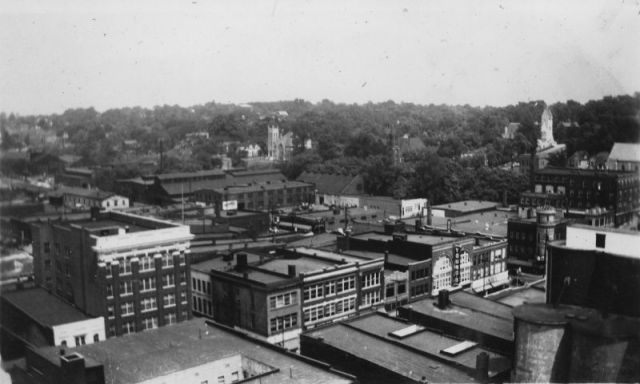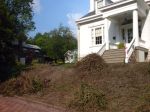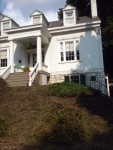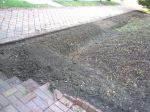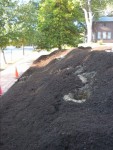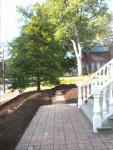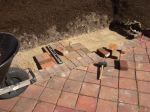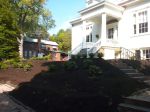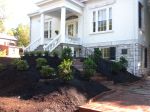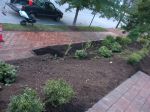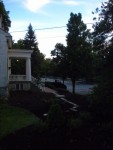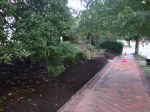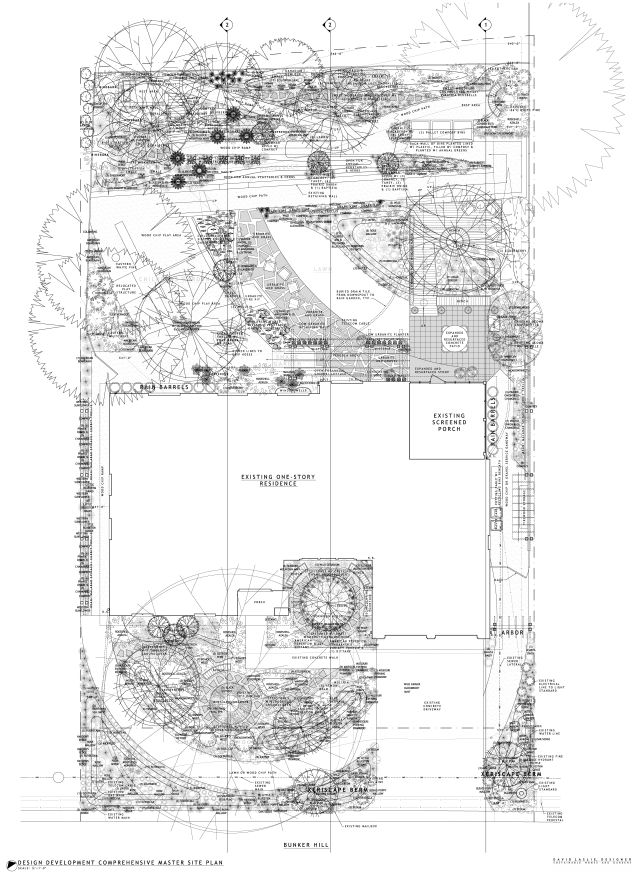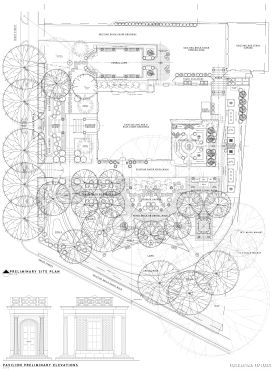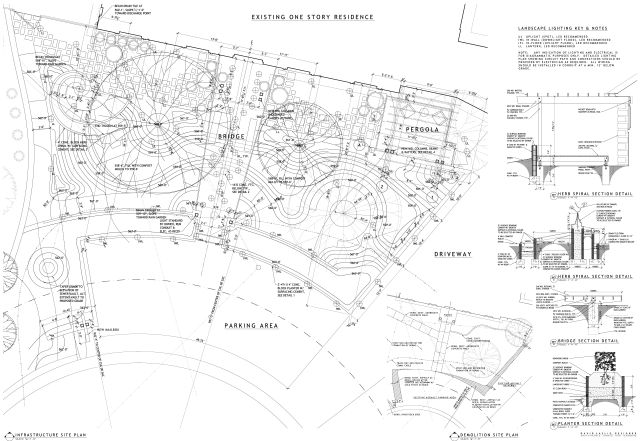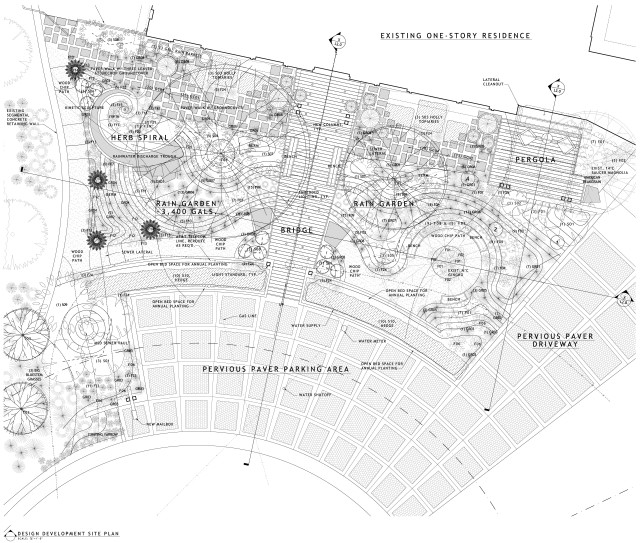 The recent warm temperatures, although fleeting, seemed almost a consolation prize for having made it through the impact of the polar vortex. Though it’s rewarding to finally find enough time to clean last year’s popcorn crop, I think it fair to say cabin fever had set in for not only me, but for most folks here in the metropolitan Saint Louis area; the opportunity to emerge with the groundhog from our winter slumber to grab a bit of fresh air was most welcome, albeit very deceptive. We went from -7F to 67F over just a couple days; unfortunately, many people in the area have succumbed to influenza. And now at the end of the week, back into the deep freeze we’ve gone. Despite the best predictions of meteorologist rodents, and in spite of the stock we put in them, we’re most decidedly still experiencing winter. Signs of spring abound, however, and I was grateful to take in many of them last weekend while knocking a few things off the to-do list.
The recent warm temperatures, although fleeting, seemed almost a consolation prize for having made it through the impact of the polar vortex. Though it’s rewarding to finally find enough time to clean last year’s popcorn crop, I think it fair to say cabin fever had set in for not only me, but for most folks here in the metropolitan Saint Louis area; the opportunity to emerge with the groundhog from our winter slumber to grab a bit of fresh air was most welcome, albeit very deceptive. We went from -7F to 67F over just a couple days; unfortunately, many people in the area have succumbed to influenza. And now at the end of the week, back into the deep freeze we’ve gone. Despite the best predictions of meteorologist rodents, and in spite of the stock we put in them, we’re most decidedly still experiencing winter. Signs of spring abound, however, and I was grateful to take in many of them last weekend while knocking a few things off the to-do list.
Hamamelis virginiana (Witch Hazel) is in full bloom, inviting closer examination and perhaps a sniff.

The apple, pear and cherry trees have all been pruned. All have set nice buds, promising a decent amount of fruit this year if all goes right. Both the Gravenstein and Golden have grown upright and proud, while the dwarf Winesap has taken on a more shrub-like form. I’m a little concerned about the long term viability of the graft (healthy for now, but with a very pronounced scar). I’ve refrigerated some of the scion wood for grafting, if I find the time.
The pear wasn’t getting enough light where I had originally placed it a few years ago, so last winter I pruned it back hard, dug it up, and moved it to a new location with more light. Throughout the heat of summer it dropped a few leaves but held its own. The twenty foot tall specimen seems to have established itself well as all the new buds look healthy and are beginning to swell. I’ve pruned back the all the raspberries to around 10″ above grade, and spent veg and forb stems in the production beds to about 4″; most of the rest of last year’s growth in perennial beds still stands- a source of seeds and insects for hungry finches and cardinals.
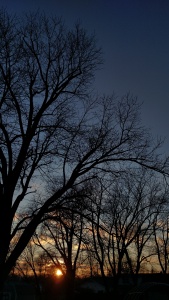 The birds are more active these days. Even on damp, colder days like yesterday, bird song is on the increase. The finches work as a team, scouring over the garden like a wave, thinning out the red clover seeds I scattered, no doubt. Glad I broadcast them with a little extra exuberance; hopefully, enough will sprout to give me a decent cover crop to chop and drop before the bulk of spring planting begins.
The birds are more active these days. Even on damp, colder days like yesterday, bird song is on the increase. The finches work as a team, scouring over the garden like a wave, thinning out the red clover seeds I scattered, no doubt. Glad I broadcast them with a little extra exuberance; hopefully, enough will sprout to give me a decent cover crop to chop and drop before the bulk of spring planting begins.
I’ve spotted a daffodil or two emerging from the leaf litter under the apple trees, but only barely. They are more patient and probably have more sense than us. They know rodents are notoriously untrustworthy.
Last year I set up a rabbit fence along one property line to keep out the ever-present groundhogs. Naturally, one found its way into the garden and over the summer dug a couple holes on the north sides of some hugelbeets, all the while sneering at the traps I set. As the ground had thawed completely last weekend, I pulled all the stakes and removed the fence such that if the groundhog were to reemerge and decide things smelled enough like Spring to look around for a snack, he/ she might be compelled to cross the boundary line, squeeze through the cattle fence without getting stuck, and return to the lake. Needless to say, I’ve not yet seen my uninvited guest, but February is longer than it seems, and we’re only a week in.
I started a variety of eggplant seeds back around the third week of January. Many sprouts were tall enough to touch the domes over the germination trays, so I took a little time this week to move the sprouts up to their own individual containers. At this point, I have just under 60 plants of seven varieties: Black Beauty, Listada de Gandia, Korean Red, Astrakom, Thai Long Green, White Egg, and Ichiban.

Greens are doing so well; I started a second batch. As there was a dearth of greens from the garden last year, primarily due to bad timing on my part early and pressure from cabbage whites later, I’ve sought to make up for that this year by trying to start more indoors and earlier. There are five varieties of lettuce and some lovely Asian mustards, amaranth, and chards. I’m looking forward to huge salads come April. Naturally, pictures will follow.
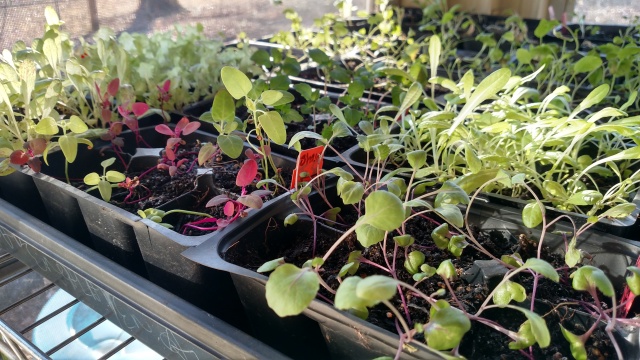
I had a little leftover leaf mulch at the end of last season and decided well before things froze solid to spread that thinly around on the salad beds. Temps in January were warm enough and soil conditions one day were dry enough to run though three of these beds with the broadfork; just enough to lift the soil a bit and allow some of the organic matter to fall into the voids left by the fork. Over these beds I’ve already broadcast some arugula, leek and carrot seeds. I’ve learned that it’s really never too early to plant these.
We’re off to a decent start for 2019. Looking forward to warmer days ahead, moving some of the greens outside, and freeing up some space on the grow racks for peppers, which will need to be started within the next ten days or so.

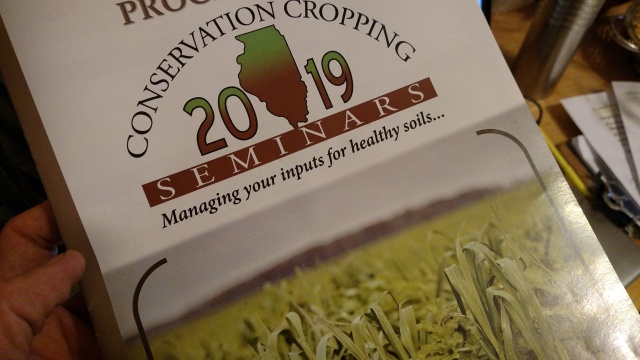 This past week, I attended one of the 2019 Conservation Cropping Seminars sponsored by the
This past week, I attended one of the 2019 Conservation Cropping Seminars sponsored by the 
